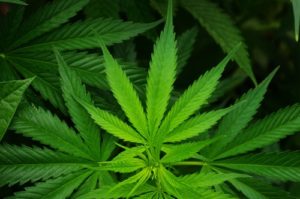Cannabis – CBD and THC. What’s the difference?
Hemp is a commonly used term for high-growing varieties of the Cannabis plant and its products, which include fiber, oil, and seed. Hemp is refined into products such as hemp seed foods, CBD oil, wax, resin, rope, cloth, pulp, paper, and fuel.
Ref: Wikipedia
Hemp makes more fuel, fiber food and medicine than any other plant, and it was the first crop sown, over 12,000 years ago. An acre of hemp produces 3,000 gallons of oil, 3 tons of protein and 30 tons of fiber a year.

Hemp and Marijuana are both of the Cannabis plant genus and cannabinoids are compounds that are unique to Cannabis.
There are over eighty different cannabinoids, but THC and CBD are the best understood and most studied. They were also the first two cannabinoids discovered – back in the late 1930s – and were the first two cannabinoids to be fully described and researched beginning in 1964.
THC is the cannabinoid people think of when they think of marijuana. It is a psychotropic compound that produces the “high” that recreational cannabis users are seeking. Both THC and marijuana are Schedule 1 controlled substance, according to the U.S. government. However, CBD is non-psychotropic and is not a controlled substance.
Both THC and CBD exert virtually identical beneficial effects (in fact, CBD is considered to have wider therapeutic value); the only difference being that THC is psychotropic and CBD is not.
Both THC and CBD act on the endocannabinoid system in the human body, a vital cellular signaling system that is involved in modulating pain, appetite, mood, memory and cellular life and death cycles. Research continues to show that CBD protects against the minimal adverse effects of THC, and appears to inhibit the THC “high.” When CBD and THC are compared head-to-head, there’s very little need to have a product with a lot of THC unless you are looking for recreational cannabis.
CBD and THC exist in cannabis plants in a wide range of proportions. Some cannabis has far more THC than CBD; this is commonly called “marijuana.”
Marijuana is cannabis that has been cultivated, manipulated and/or cloned by man over many decades for its intoxicating effects. Typical THC content in marijuana, including “medical” marijuana, ranges from 3% all the way up to 30%, with the average between 11% and 13%.
Hemp is just the opposite; it has negligible THC (generally less than 0.3%) and an abundance of CBD. This is nearly identical to the THC/CBD profile found in natural growing Cannabis sativa. This natural balance of cannabinoids is one of the primary motivators for focusing on developing cannabinoid products from agricultural Hemp as opposed to marijuana.
